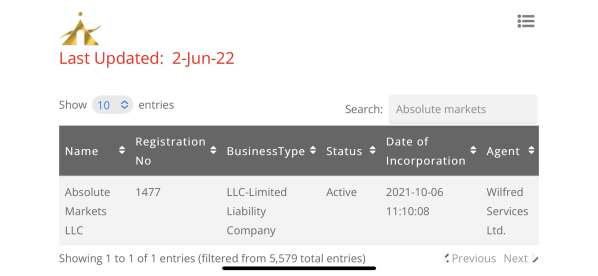
Here are the successful forex trading tips that will help you grasp the complexity of the currency market. Foreign exchange (forex) trading activity dwarfs the stock and bond markets daily. Many fundamental advantages, such as the largest leverage available in any financial sector and the fact that market activity happens every trading day, are provided to traders by this market. In the foreign exchange market, “nothing occurs” only happens on rare occasions.
Forex trading is sometimes referred to be the last big investment frontier, the only market in which a small investor with a little amount of trading capital may legitimately expect to trade their way to a million dollars. Large institutional investors exchange billions of dollars in currency transactions every day when a bank is open somewhere across the world.
Foreign currency trading is simple. Trading it properly and consistently earning gains is challenging.
As a forex trader, these five methods may make your trades more profitable and your career more successful; here are some of the keys to success in the market.

Pivot Points are the first step in winning Forex trading.
If you're not a day trader, you should still pay attention to daily pivot points since they're important for all types of traders, not just day traders. Why? Because thousands of other traders are keeping a watch on pivot points as well.
Pivot trading may at times seem to be a self-fulfilling prophecy. Traders who place orders at pivot levels are known as “proven pivot traders,” which means that markets typically find support or resistance or make market turns at these levels. Many traders have set orders anticipating a big move off pivot levels, but this isn't always the case when massive movements occur.
WikiFX offers a free Pivot Point Calculator (image shown below) tool to traders that use pivot trading as their primary trading method. This Pivot Point Calculator provides pivot points for four distinct systems in seconds! It allows you to compute pivot points and support/resistance levels.

Step 2 of Winning Forex Trading – Trade with an Advantage
The most successful traders are those who only risk their money when a market opportunity gives them an advantage, something that raises the likelihood that the trade they make will be successful.
If you purchase at a price where the market has historically demonstrated strong support, even that may provide you an edge (or selling at a price level that has previously proven to be strong resistance).
Success is more likely if you have several advantages in technology on your side. As a result of traders' reliance on moving averages, a market's support or resistance near the convergence of the 10-, 50-, and 100-period moving averages should be strong.

Converging technical indicators give a comparative advantage when numerous indicators from different periods join together to provide support or resistance. As an example, have a look at the price reaching the 50-period moving average on the 15-minute time frame while simultaneously approaching the 10-period moving average on the hourly or 4-hour charts.
It's another example of numerous indications working in your favor when you've reached a support or resistance level, and then price action at that level signals that the market is likely to turn around.

In forex trading, avoiding massive losses is more important than making enormous profits. If you're a newbie to the market, this may not make sense, but it is correct. Winning in forex trading requires understanding how to protect your cash.
The famous Paul Tudor Jones, the owner of the highly successful hedge fund Tudor Corporation, has declared unequivocally that “the most fundamental rule of trading is to play superb defense.” If you're interested in learning more about trading, Tudor Jones is a great place to start. While he is well-known for his success in the financial markets, he is also an important figure in the development of the ethics training program that has since been a requirement for participation in all U.S. futures exchanges.)
Why is having a strong defense so crucial in forex trading? The vast majority of forex traders fail because they run out of money and are unable to continue trading. Before they can participate in what turns out to be a hugely successful trade, they lose all of their money.
It is not an exaggeration to state that adopting and adhering to precise risk management principles nearly assures that you will ultimately be a winning trader. A “home run” trade will eventually fall into your lap and greatly increase your trading profits and account size if you can only keep your money safe from painful losses. Possibly if you don't consider yourself to be the “greatest trader in the world,” good fortune will eventually lead you to a transaction that nets you enough money to make the rest of the year, or even your whole trading career, a resounding success.
Because of this, if you wish to take advantage of the deal, you must have enough money in your trading account to do so at any given moment.
Market experts like Paul Tudor Jones are far from alone in advising traders to wait for an opportunity that is “nearly equal to having a million dollars put in front of you and all you have to do is pick it up” before risking their whole portfolio. There aren't these kinds of opportunities every day, but they do happen regularly and more often than you may expect.
Again, since it can't be stressed enough, limiting losses by not overtrading or taking on too much risk in any one trade is the most important way to make money trading.
Make Your Technical Analysis Easier in Winning Forex Trading
Take a look at these two pictures of two very different forex traders:
-
At least eight or nine technical indications may be seen on each of the several charts that Trader #1 keeps up to date on.
-
Just two or three technical indicators are overlaying the price action of the market for Trader #2, who works from home with a laptop or notebook computer and uses only a few technical indicators.
-
It's possible that Trader #1 isn't as successful a forex trader as you believed. The character shown in Trader #2 is a better representation of the activities of a consistently successful forex trader.
-
As far as technical analysis is concerned, there is almost no limit to what you can do. However, more doesn't always equate to better. When a trader takes into consideration a seemingly unlimited number of indications, it might be difficult to see the forest through the trees, resulting in confusion, doubt, and hesitancy.
-
A relatively basic trading strategy, one with just a few trading rules and requiring evaluation of a few indicators, tends to produce more profitable deals. When it comes to forex trading, we've come across a highly successful trader who doesn't use any technical indicators on his charts, including trend lines, moving averages, relative strength indicators (RSI), and expert advisors (EAs).
-
A simple candlestick chart is all he uses to do his market analysis. Candlestick patterns like pin bars (also known as hammers or shooting stars) that appear at or around support and resistance price levels may be identified simply by studying past price activity in the market. His trading strategy is to trade these patterns.
Set Stop-Loss Orders at Reasonable Price Levels, Step #5 of Winning Forex Trading
Protecting your trading capital against a poor transaction may seem inconsequential, but this principle is critical to the success of any trading strategy. Of sure, but it's also a crucial aspect of a successful forex trading strategy.
Risk management is sometimes misunderstood by rookie traders as simply placing stop-loss orders around the entrance point of a trade. Stop-loss levels that are too far away from your entry point might have an unfavorable risk-to-reward ratio, which is part of smart money management (i.e., risking more in the event the trade loses than you reasonably stand to make if the trade proves to be a winner). As illustrated by having the trade stopped out for a loss, only to see a price increase to a level that would have yielded a sizable profit had you not been stopped out for a loss, executing stop orders too near to your entry point commonly adds to a lack of trading success.
Only transactions in which a stop-loss order may be placed close enough to the entry point should be entered to prevent a catastrophic loss. According to your analysis, you should also set stop orders at a suitable price point.
If your market analysis is right, stop-loss orders should be set just above a price at which the market should not trade.
Example
Consider the two charts of AUS/USD below to help you better comprehend this topic. They show the market price behavior on August 31, 2017. If a trader observed that a candlestick ended above the two moving averages (red and blue) represented on the chart, 0.7890 may have been an option (indicated by a red up arrow shown just above the medium-length blue candlestick that appears just above the word “level” on the left-hand side of the chart). Options traders may have chosen to put a very low-risk stop-loss order just below the most recent low of 0.7880, as shown by the horizontal red line displayed in the graph.

To make matters worse for him, the subsequent price movement (just to the right of the word “low”) would have forced him to withdraw before there was a major price movement in his direction. Because the resultant loss would have been low, the trader might be deemed to have conducted appropriate risk management. As can be seen, by the price movement on the chart's right side, the price shot up after the deal was closed. A sizable profit may have accrued to the trader if he hadn't been interrupted.
At a respectable distance from previous low points, the stop-loss levels seem to have been established (just before the trade was triggered, several candlesticks in a row showed the price holding above the 0.7880 level). What would have happened if the stop-loss order had been put at a more sensible place? On the 4-hour chart, a more in-depth look at the market's price action shows unambiguously “no.” With this in mind, a look at the 4-hour chart below demonstrates how a drop in price as low as -0.7870 could have occurred without deviating from a possible scenario of price growth, as the price had previously dipped to -0.7870 before finding buying support several times in the previous two weeks of trading.

A more realistic support level of around 10 pips lower, below 0.7870, may have been chosen by the trader if he had looked at support levels on a longer time frame than the 5-minute chart on which he was basing his trade. To be sure, his investment was riskier, but not by a significant margin. There would have been no harm to him. When he was stopped out for a 10-pip loss, instead of making a tidy profit, he had a reasonable chance of seeing the market rise much higher.
One of the qualities that distinguish great traders from their counterparts is the ability to place stop-loss orders appropriately. Because of this, they keep their stops close enough to protect themselves from big losses, but not so close that they are unable to participate in profitable trades.
Stop-loss orders should be placed at levels that protect the trader's capital from excessive losses. In the hands of an experienced trader, this may be accomplished while avoiding the risk of missing out on a true profit opportunity.
Conclusion of Forex Trading
The forex market, like every other investing area, has its distinct features. A trader must understand these traits via time, experience, and research to trade them effectively.
Traders would do well to remember the following useful forex trading strategies presented in this guide:
-
Take note of the pivot levels.
-
Trade with a competitive advantage
-
Keep your trading money safe.
-
Simplify your market research
-
Set your stops at really realistic levels.
Of course, it isn't the end of trading knowledge in the forex market, but it's a good place to start. If you remember these fundamental concepts of profitable forex trading, you will have a distinct trading edge. We wish you the best of luck.
Visit WikiFX News to check out more educational articles that could help on your forex trading journey.
WikiFX app is available for free to download on App Store and Google Play Store



